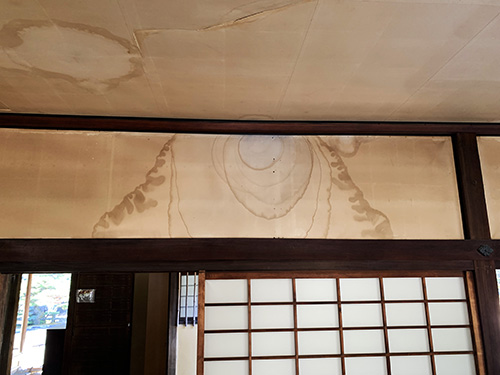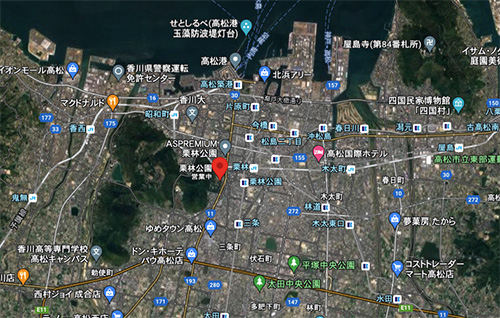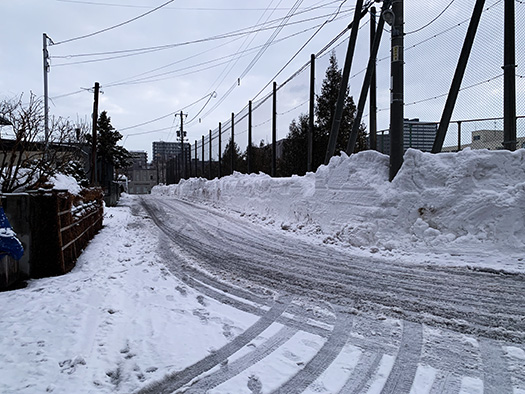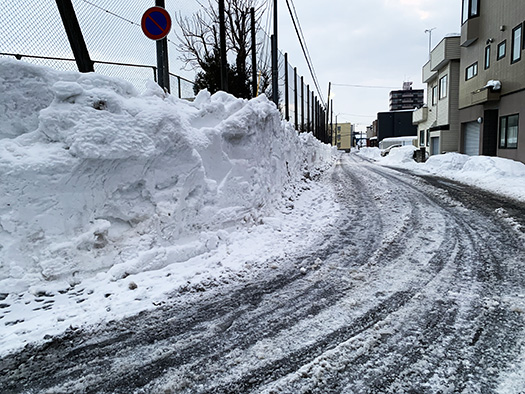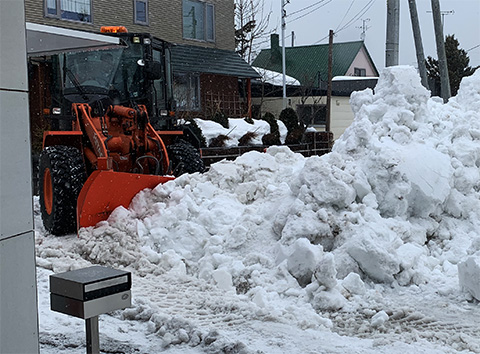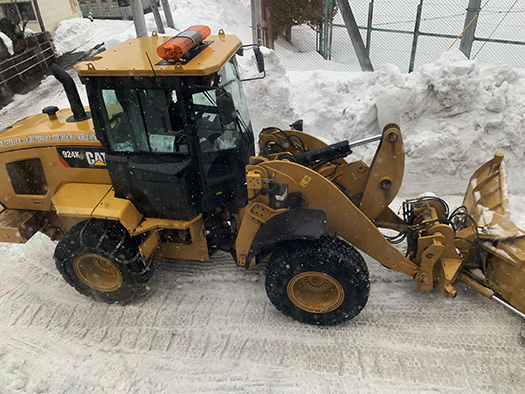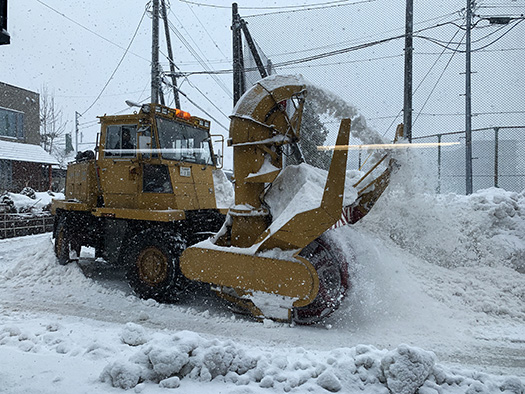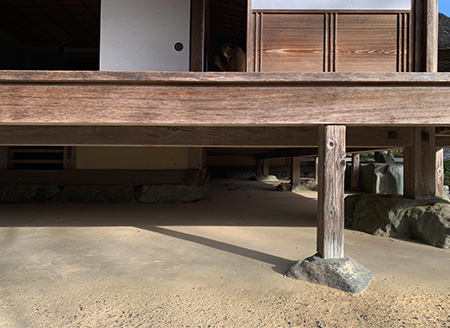



掬月亭のメインルーム「掬月」からの観望であります。
わたしは一観光客としての訪問なので、障子を開け放っていただくことは
できませんでした(笑)ので、想像で開け放していただければ幸い。
画面には見えませんが右手側に屏風のような山塊があり、
以前の河川流路をそこで築堤して川筋を大きく変えた。
それには画面前面に広がっている「南湖」造成土木工事の時の土を
掻き揚げていったとされているのですね。
たぶんそういう土木工事計画が先行してあって
その結果、できた人造湖を南湖と呼称しその景観を徐々に造作し、
そういう人造湖の景観をたのしむという動機から
この掬月亭という建築計画は進行していったのだろうと思われます。
画面左側には「高松城」があるのでその主宰者にとっては
「奥座敷」的な大名庭園という位置付けになったことがわかる。
こういう景観全体をプロデュースしたことを自慢したいのか。
どうもわたしは、自然改造して己れを誇ろうとするこういった心理に
素直にしたがうのが苦手であります(笑)。
いや、そのようなことに出くわしたときには仕方なく称揚するでしょうが、
内心としてはそのように対応しなければならない人物と
警戒心を持って接することになるだろうと思います。
いま現代で言えばプーチンのようなのが極限例でしょうか。
おれは核兵器も自由に使えるんだぞ、ひれ伏せ!みたいなマウント心理。
そういう恐怖心を人に植え付けさせたい心理って、
内面的な空虚をそういうもので埋め合わせたい欲求のような気がする。
現代世界は基本的にはこういう独裁支配から脱した民主主義が基本の世界。
この掬月亭のような遺構は人間の歴史資産として民主的に楽しむ世界。
建築の目的としての「花鳥風月」道楽が実現されたものとして
いっときの体験を共有する装置として存続させているものだと思う。
支配者と被支配者の関係に置いて了解可能な範囲での権力者の建築道楽。

現代のわれわれとしては、そういった花鳥風月世界観という
ごく日本的な一期一会感を表現する建築営為として鑑賞する。
建築の命名としてもまことに一瞬の体験、
湖面と盃に映り込む月を楽しむという蒸暑の夜の情景が脳裏にうかぶ。
見立て、設計意図としてはこの「掬月の間」は屋形船と考えているそうで
そういう建築の趣向をたのしむのが作法なのでしょう。
English version⬇
[View from the main room “Kikugetsutei” ③ Shikoku living space exploration-28]
The intention is to enjoy the scenery of the artificial lake and artificial hills that were built by remodeling nature. Is it a monument that such a sukisha was realized in Japanese history?・ ・ ・
It is a view from the main room “Kikugetsutei” of Kikugetsutei.
Since I am a tourist, it is not possible to leave the shoji open.
I couldn’t do it (laughs), so I hope you can open it up with your imagination.
Although it is not visible on the screen, there is a folding screen-like massif on the right hand side,
The old river channel was built there and the river line was changed drastically.
To do this, use the soil from the civil engineering work to create the “South Lake” that spreads out in front of the screen.
It is said that it was kakiage.
Maybe such a civil engineering work plan was ahead
As a result, the artificial lake that was created was called the South Lake, and the landscape was gradually created.
From the motive to enjoy the scenery of such an artificial lake
It seems that this architectural plan called Kikugetsutei has progressed.
There is “Takamatsu Castle” on the left side of the screen, so for its presiding officer
You can see that it has been positioned as a “Okuzashiki” daimyo garden.
Do you want to brag about producing this kind of landscape as a whole?
Apparently, I’m trying to remodel myself and be proud of myself.
I’m not good at following obediently (laughs).
No, I would praise you when you come across such a thing,
Inwardly, with a person who has to deal with that
I think you will be treated with caution.
Is it an extreme example like Putin in modern times?
I’m free to use nuclear weapons, prostrate! Mount psychology like.
The psychology of wanting people to instill that kind of fear
I feel like a desire to make up for the inner emptiness with such things.
The modern world is basically a world of democracy that has escaped from such dictatorship.
This remains like Kikugetsutei is a world that is democratically enjoyed as a human historical asset.
As a realization of “Kacho Fugetsu” hogaku as the purpose of architecture
I think it is a device that keeps the experience of the moment.
Architectural music of a powerful person within the range that can be understood in the relationship between the ruler and the ruled.
For us today, such a view of the Kacho Fugetsu world is called.
Appreciate as an architectural activity that expresses a very Japanese once-in-a-lifetime feeling.
A truly momentary experience as the name of architecture,
The scene of a hot and humid night, where you can enjoy the moon reflected on the surface of the lake and the sake cup, comes to your mind.
It seems that this “Kogetsu no Ma” is considered to be a houseboat as a design intention.
Perhaps it is a manner to enjoy such an architectural taste.
Posted on 3月 20th, 2022 by 三木 奎吾
Filed under: 住宅マーケティング, 日本社会・文化研究 | No Comments »




